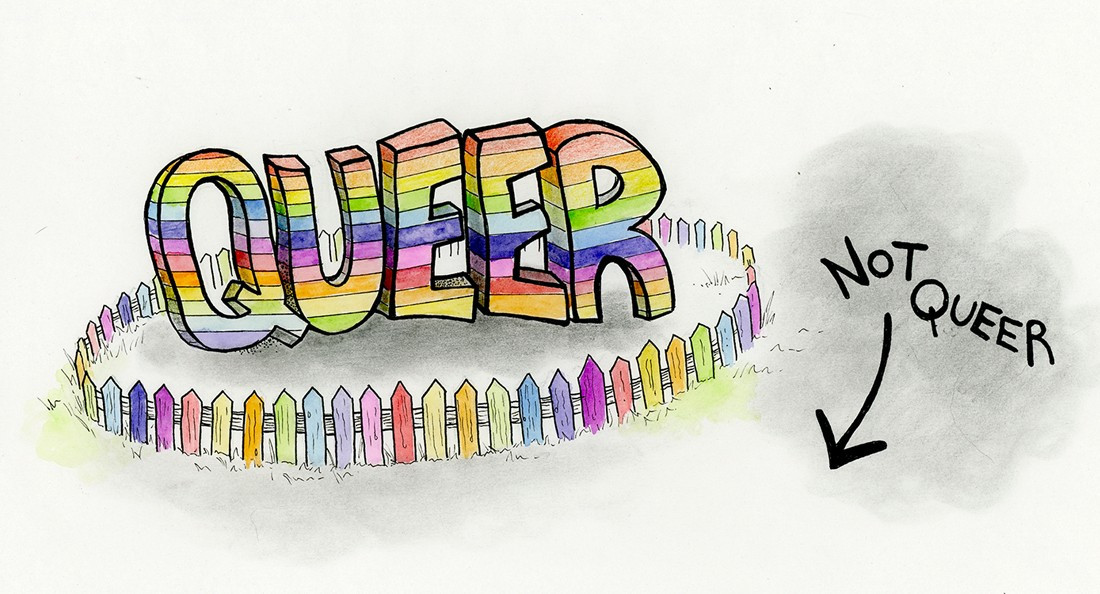Much ado about queer theory
Tracing the history of the word “queer”
Strange; odd; peculiar; eccentric. These are the 16th century connotations of the word “queer.”
Back then, it was part of a common Northern English saying: “There’s nowt so queer as folk,” which meant there is nothing as strange as people. It wasn’t used as a derogatory term then, not until 1894, when John Douglas, the ninth Marquess of Queensberry found out his son was romantically involved with Oscar Wilde.
Furious, he launched a massive case, and within the court case, letters emerged from Douglas using the term “snob queers” to describe gay men. At this point, “queer” became commonly understood as a slur or derogatory term.
This differs quite a bit from how the term is used now by a younger generation. It is commonly used as an umbrella term to describe a wide range of identities in the LGBT2SQ+ community not falling under the category of cis or straight. The word has gone on a long journey to arrive at its current meaning and acceptance, but it still has some negative connotations that must be undone.
In 1981, Los Angeles and major metropolitan areas of the United States saw large amounts of inexplicable death and sickness in many gay men, unknowingly caused by AIDS – which was first termed GRID, for Gay Related Immunodeficiency. It wasn’t until 1982 that it was renamed AIDS (Acquired Immune Deficiency Syndrome), then linked to the retrovirus HIV.
The AIDS crisis wasn’t talked about by politicians at all during the time of its outbreak, and Ronald Reagan, who was president of the United States at the time, completely neglected it. This neglect came from stigma surrounding AIDS. Being a disease heavily associated with drug users and the queer community, it was commonly referred to as “gay plague” by politicians.
While the American government had a $600 million AIDS prevention budget, most of that money was used to help white, middle-class, heterosexual people, not the folks actually suffering the most. In fact, in 1987, congress banned the budget being used on AIDS prevention and education campaigns that “ promoted or encouraged, directly or indirectly, homosexual activities.”
While the AIDS crisis began in 1981, Reagan didn’t address it publicly until 1985, and it wasn’t until 1996 that the miracle drug HAART was discovered – a combination antiretroviral drug used to maintain viral load, delaying the onset of AIDS. If the Reagan administration had addressed AIDS when it first became a problem, many people could have been saved.
During the AIDS crisis is when the movement to reclaim the word “queer” really took off. In the 1980s to 1990s, groups such as ACT UP and Queer Nation began using it in protests and materials as an act of resistance. Punks would walk through New York chanting “We’re here, we’re queer, we will not live in fear.”
“Queer” entered into pop culture with the television show Queer as Folk, released in 1999, and then, Queer Eye for the Straight Guy, released in 2003. While the term entered into popular culture with these shows, it was really only applied to rich, white, gay men, as there wasn’t much other representation for the word in mainstream North American media.
Now, it feels like “queer” is finally becoming a term used to represent non-cis, non-straight identities of all folks, not just rich, white men.
Albeit, I am a white, genderqueer person who doesn’t face much discrimination, especially as most people clock me as a cis woman, and it does feel safe to be able to hide behind that façade.
Not everyone is cis-passing though, or has the embedded privileges, safety and opportunities that come with being a white, middle-class, able-bodied queer person.
Not everyone wants to use the word queer, and not everyone likes it. Its history is long and complicated. We don’t all have to accept the word queer for ourselves, but we do need to acknowledge its history and reclamation, and respect the community the word has created. As Eli Clare says so well in his book Exile and Pride, “To transform self-hatred into pride is a fundamental act of resistance.”
Charlie Fraser is a queer, non-binary student living on Treaty 1 Territory and working towards reducing stigmas and increasing knowledge.
Published in Volume 73, Number 17 of The Uniter (February 7, 2019)








